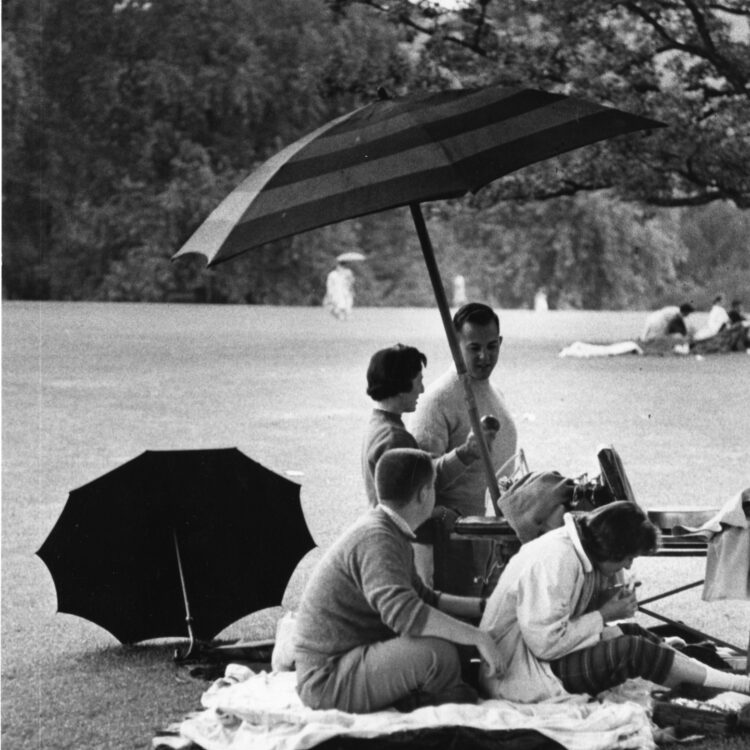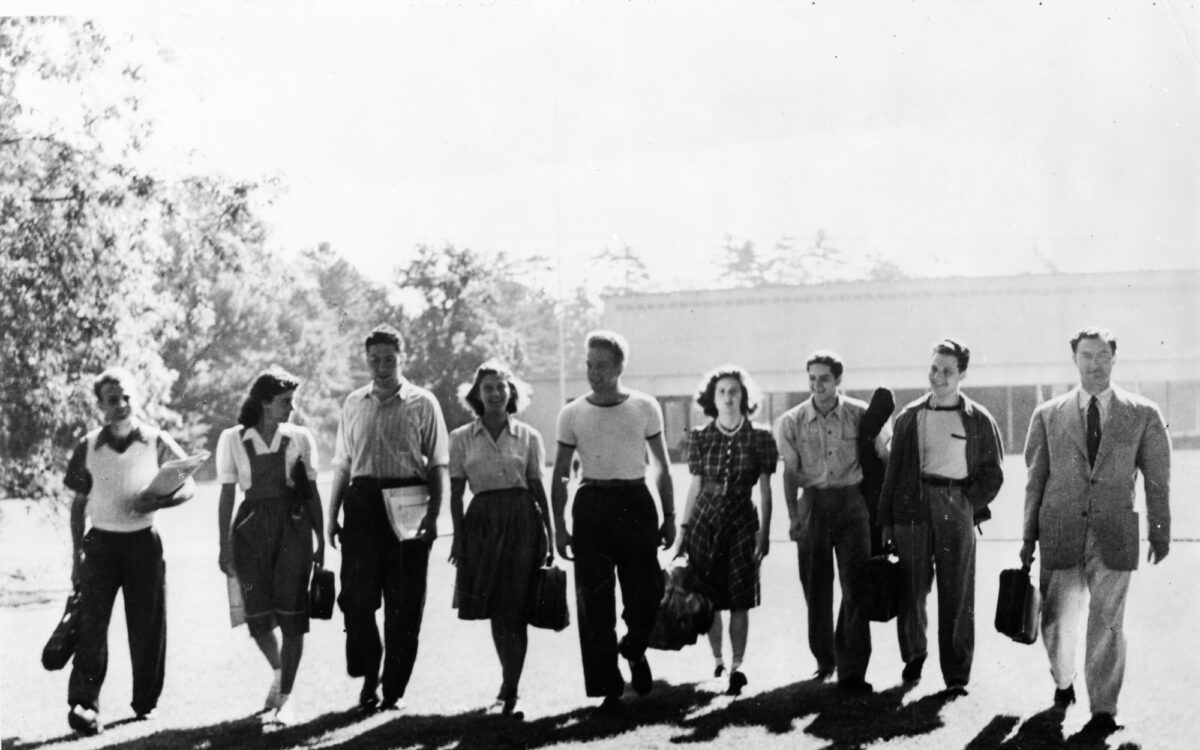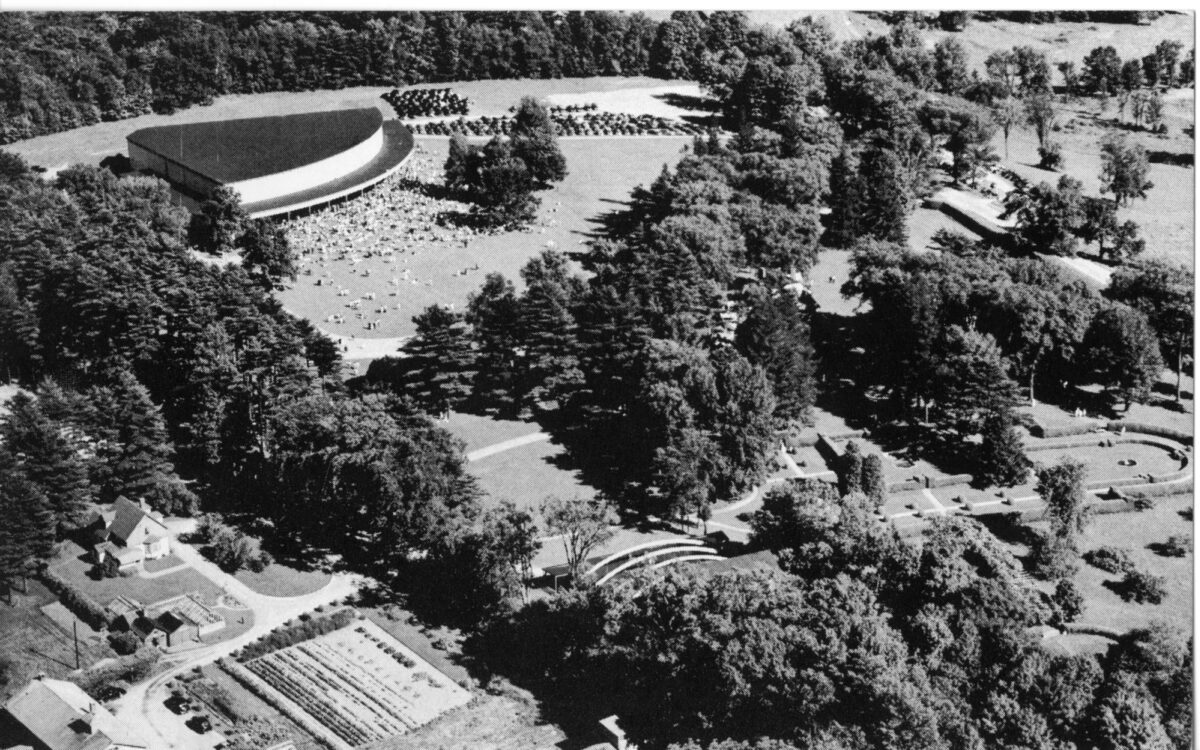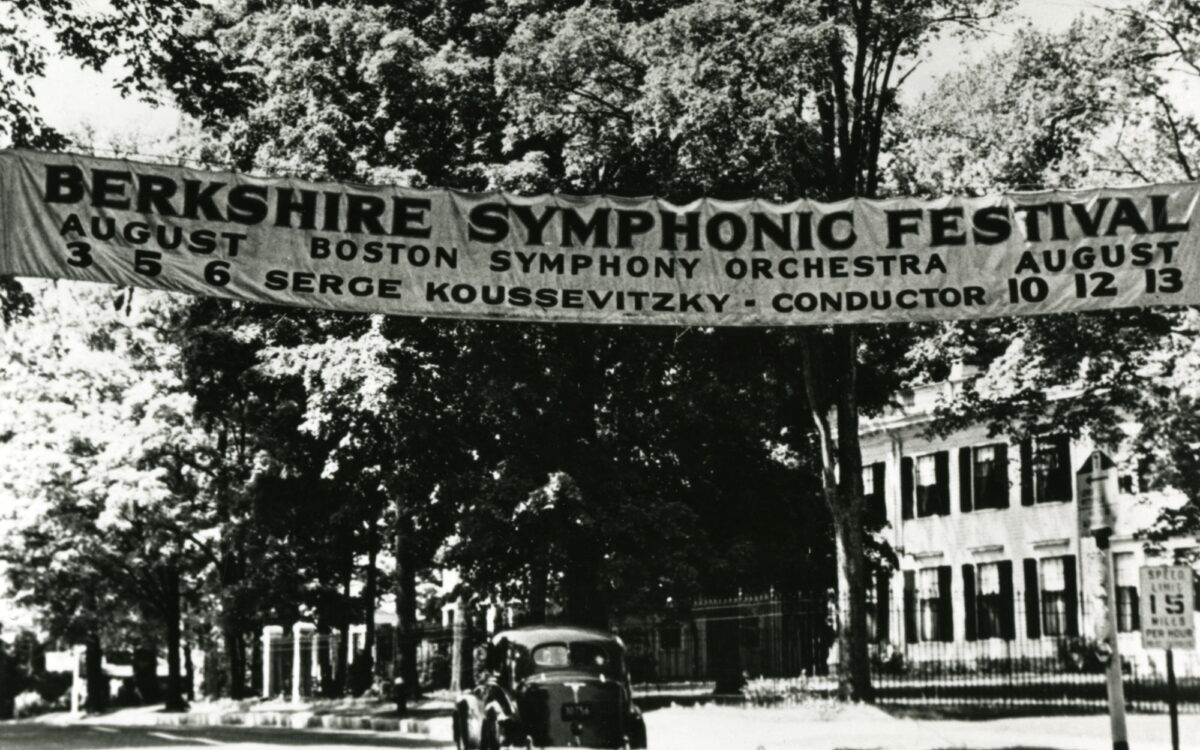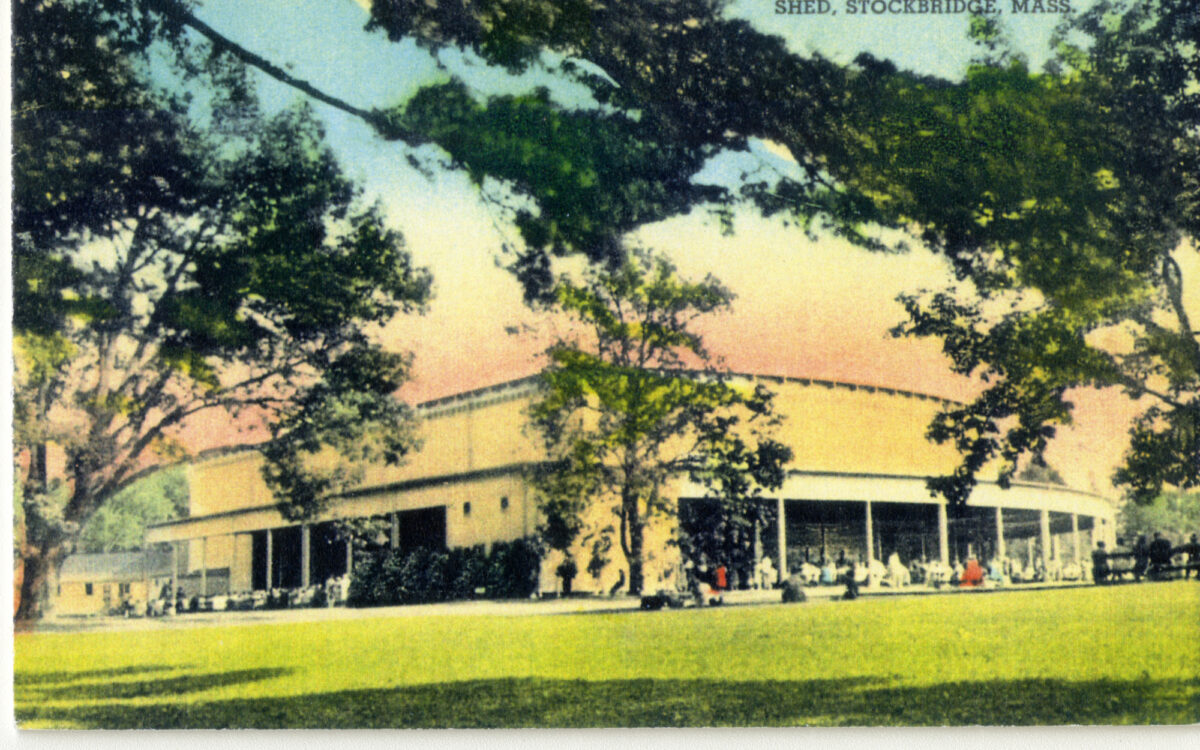In the winter of 1936, Mrs. Gorham Brooks and Miss Mary Aspinwall Tappan offered Tanglewood, the Tappan family estate, with its buildings and 110 acres of lawns and meadows, as a gift to Koussevitzky and the orchestra. The offer was gratefully accepted, and on August 5, 1937, the festival's largest crowd so far assembled under a tent for the first Tanglewood concert, an all-Beethoven program.
At the all-Wagner concert that opened the 1937 festival's second weekend, rain and thunder twice interrupted the Rienzi Overture and necessitated the omission altogether of the "Forest Murmurs" from Siegfried, music too delicate to be heard through the downpour. At the intermission, Miss Gertrude Robinson Smith, one of the festival's founders, made an appeal to raise funds for a permanent structure, and soon thereafter, plans were underway for a "music pavilion."
The architect, Eliel Saarinen, proposed a design that proved both too elaborate and too costly. His second, simplified plans were still too expensive; he finally wrote that if the Trustees insisted on remaining within their budget, they would end up with "just a shed." The Trustees then turned to Stockbridge engineer Joseph Franz. The building he erected was inaugurated on August 4, 1938, and remains, with modifications, to this day. It has echoed with the music of the Boston Symphony Orchestra every summer since, except for the war years 1942-45. In 1959, the installation of the Edmund Hawes Talbot Orchestra Canopy, along with other improvements, produced the Shed's present world-famous acoustics. For its fiftieth anniversary in 1988, the Shed was rededicated as "The Serge Koussevitzky Music Shed."
In 1940, the Berkshire Music Center (now the Tanglewood Music Center) began its operations. By 1941, the Theatre-Concert Hall, the Chamber Music Hall, and several small studios were finished, and the festival was attracting nearly 100,000 visitors annually.
The 1986 addition of the adjacent Highwood estate expanded Tanglewood's public grounds by 40 percent. The newly acquired property became the site for a new concert hall to replace the outmoded Theatre-Concert Hall and for improved Tanglewood Music Center facilities. Inaugurated on July 7, 1994, Seiji Ozawa Hall provides a new venue for TMC concerts, and for varied recital and chamber music concerts.
Today Tanglewood annually draws over 350,000 visitors. Each season offers not only a vast quantity of music, but also a vast range of musical forms and styles, all of it presented with a regard for artistic excellence that makes the festival unique.
